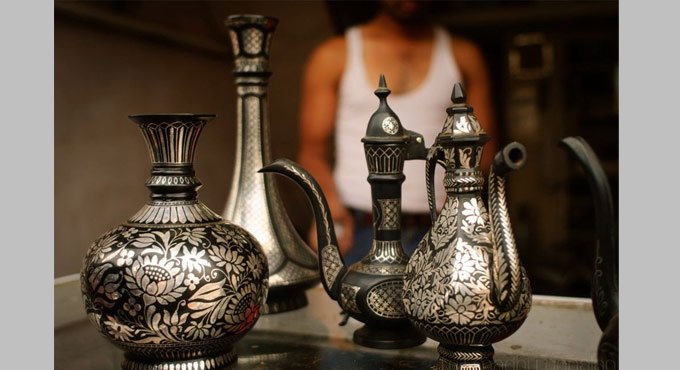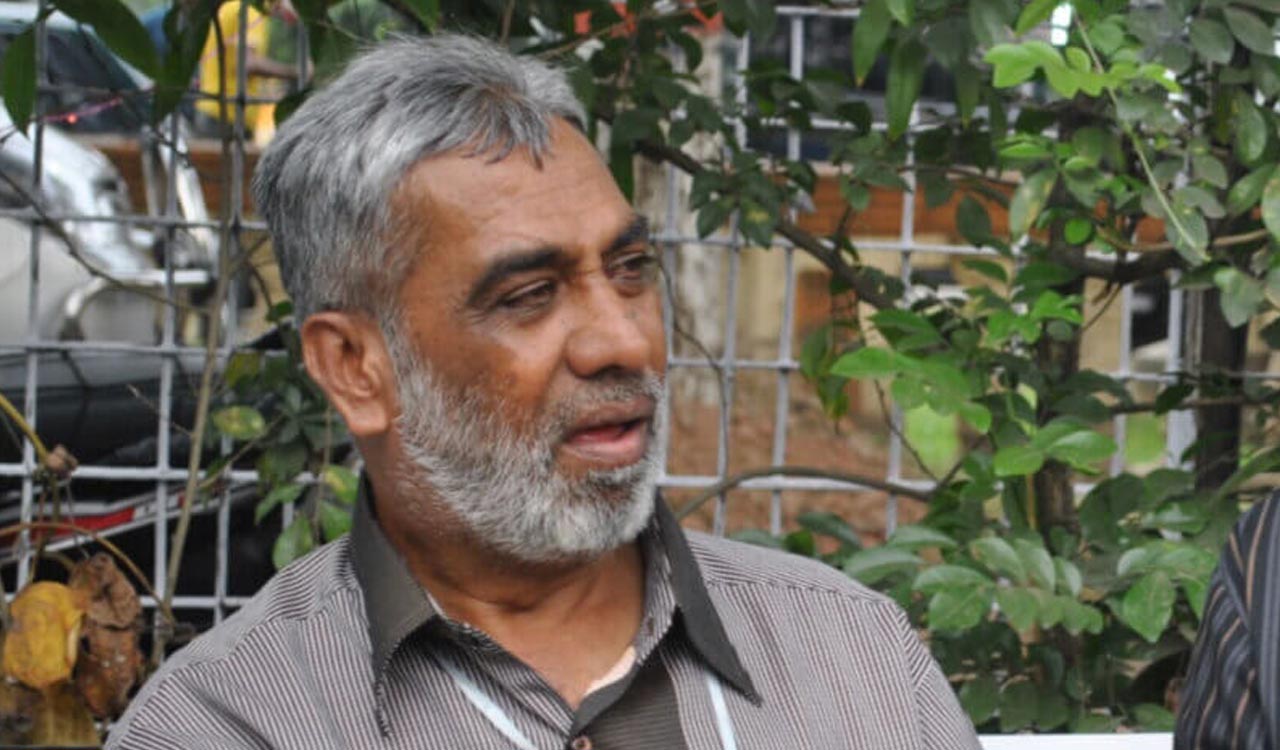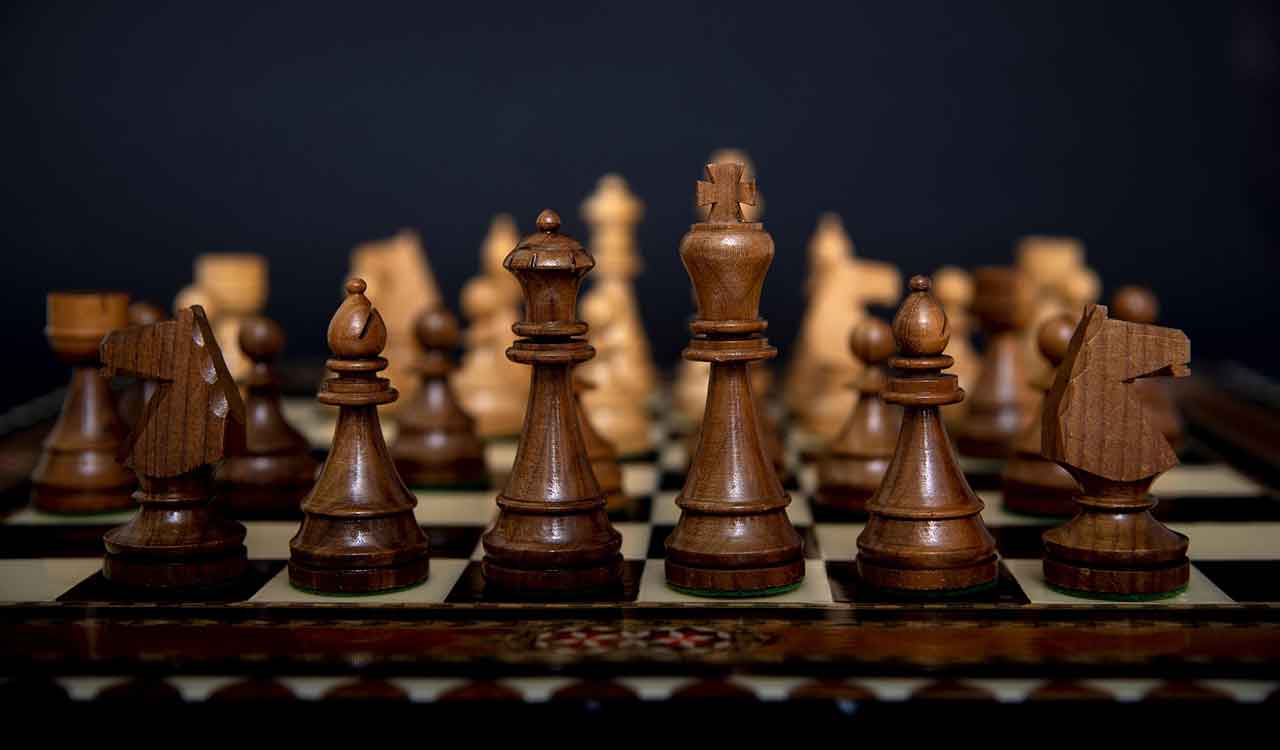An exquisite and attractive work of art
Makers of Bidriware, which involves intricate metal inlay work, produce some of the most beautiful pieces for connoisseurs

It’s Navratri time. Talking of which, when Ramakrishna Paramahamasa was asked whether he is afraid of the dark, fierce form of Kali — otherwise a caring Mother and Goddess, he simply stated the profound truth about this culture: “I think she’s so delicate and beautiful that I must take care of her and cherish her presence all the time.” And when we ask connoisseurs of Indian crafts about Bidriware, we must expect an answer on similar lines.
Bidriware is a piece of metal — which is supposed to be strong and gross — ornament but that is rather fine, exquisite and attractive. And, no wonder the devoted makers of this craft are extremely comfortable with the dichotomous nature and location, in Karnataka’s Bidar and Telangana’s Hyderabad.
Bidri, a traditional art, is locally known as koftgari. It is a kind of Damascene work that is achieved as a result of inlaying with gold or silver. Bidriware derives its name from the place of its origin, Bidar, a place bordering the States of Karnataka and Telangana. The craft flourished in the 13th and 14th century under the patronage of Bahamani Sultans who have had an influence of Persia in so many ways.
During the 14th century, a craft was brought to India by the Iranian migrants/ traders. It is said that noted Sufi Khwaja Moinuddin Hasan Chisti brought metal inlay work in the form of utensils. Later, this craft was popularised by Sultan Ahmed Shah Bahmani by inviting Iraninan craftsman, Abdullah Bin Kaiser to work on his royal palaces and courts.
It is said that Kaiser is the person behind the genesis of Bidriware in India. Kaiser, along with other local craftsmen, spread this craft in the region. Back then, the craft was akin to an ancient practice in Persia and Arabia that was known for inlaying gold and silver in copper and steel. It is believed that the know-how was brought to India from this region but the imbibed craft took a different form altogether.
Documentations over years mention that the making of Bidriware involves an eight step process. The process, nonetheless, is time-consuming and even the making of the smallest of the pieces takes upto two days. In some rare cases, a few pieces could even take months to make.
Moulding is the first step. A masterpiece is first laid onto a wooden surface and sprinkled with sanjeera powder and then the craftsmen add mud in which castor oil is mixed. Adding castor oil to the mud makes the mud smooth. Then the extra smooth/ fine mud is tightly pressed onto the mould. This very process consumes a lot of time and effort as it is very important to get the mould right.
The artisan stands and puts his/her body weight onto the mud to achieve a desired shape. The groove is now ready and the masterpiece is then removed. The sanjeera powder is sprinkled again onto the mould. The fine work of the masterpiece can now be seen clearly on the groove. In the next step, the hot molten zinc and copper (95% zinc and 5% copper) is poured into the groove. The mud that cools immediately, solidifies the metal almost immediately.
The artist then removes the excess metal from the mould and sends a smoother piece to the next steps that involve engraving, inlaying and buffering.
At this point, the base is kept on a wax surface and copper sulphate is added onto the metal. This turns the metal dark and lets the artist see the intricacies of the engraving that needs to be done. The artist engraves on a metal and then inlays the silver wires into the engraved metal by hammering which is followed by buffering. The smoother metal in silver colour is now ready for a wash with kerosene.
After rubbing this metal piece with ash, it’s subjected to oxidation with just two ingredients comprising mud (90%), ammonium chloride (10%) and little quantity of water. It is important to note that the mud is not exposed to both water and sunlight. At this stage, the metal (comprising zinc and copper) that is dipped into the solution turns black but leaves the silver inlay intact.
Over the centuries, Bidriware has been a symbol of wealth. It has adorned the aristocrats and royals. Traditionally, bidriware was used as hookahs and paan holders and a limited set of designs. Today, connoisseurs across the globe would like to get their hands on this exquisite metal inlay craft of Bidriware. It is used to make a range of utility and decorative items like cufflinks, paper cutters, jewellery, boxes, photo frames, vases and others.
The Indian master karigars of Bidar with their great ability and prowess have been able to assimilate a craft of foreign origin into India’s heritage. Bidriware art is not a handicraft. It is the transmission of the collective feeling of artists of this land. Bidriware is a product of devotion of the highest order.
The Panchatantra
The GI belongs to Karnataka’s Bidar
It was earlier used to decorate weapons and shields
Initially, gold was used to do the inlay work. But, it is now replaced with silver
The mud which is used to oxidise the metal is taken from areas under the fort which is over 100 years. It is tested by the master craftsman by tasting
The mud should taste salty. Traditionally, the soil was bought from the forts under Bidar
Now you can get handpicked stories from Telangana Today on Telegram everyday. Click the link to subscribe.
Click to follow Telangana Today Facebook page and Twitter .
Related News
-
Kanwal Rekhi opens KREST startup centre in Nizamabad
5 mins ago -
New DCPs assume charge across Hyderabad zones
11 mins ago -
Sai Vikas Reddy and Mayank Gupta shine in HCA A Division semifinals
12 mins ago -
Hyderabad and Punjab play out tie in BCCI under 15 women’s one day championship
15 mins ago -
VCare expands South India footprint with Hyderabad CoE
16 mins ago -
Jash Modi, Parth Magar and Sarthak Arya advance in WTT Feeder Series Vadodara
17 mins ago -
SBI Guwahati beats Hyderabad Circle to enter football final in Bhubaneswar
21 mins ago -
SSIM’s Samanvay 2026 begins the year with a roar
25 mins ago




